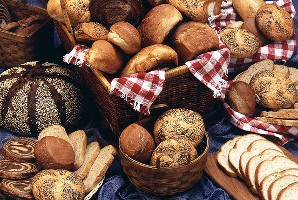Chemists with the USDA’s Agricultural Research Service (ARS) in Manhattan, Kansas have developed a process for high-quality, gluten-free bread. According to National Institutes of Health, some two million Americans suffer from celiac disease, which makes them unable to digest gluten, a protein in flour from grains such as wheat, barley and rye, causing severe diarrhea and inability to absorb nutrients.
ARS’s Scott Bean and Tilman Schober found that by removing a certain amount of fat from a corn protein called zein, they were able to produce a dough more similar to wheat dough, and free-standing, hearth-type rolls that resemble wheat rolls. They earlier had some success developing pan bread from other gluten-free grains such as corn, sorghum, and rice, but they couldn’t make free-standing rolls because the rolls spread out too much.
In previous studies, Bean and Schober found that zein — an available byproduct from corn wet milling and fuel-ethanol production — could be used to make a dough more similar to wheat dough. The dough still lacked strength, however, and the rolls produced from it were too flat.
The chemists discovered that removing more of the fat from the zein protein’s surface allowed the proteins to stick to each other much like wheat proteins do, giving the zein-based dough the same elastic properties as wheat dough. Bean used corn as an intermediate step toward achieving the ideal in gluten-free breads: a wheat-like dough using non-wheat proteins, resulting in products with a fluffy, light texture.
The research results were published in the November/December 2010 issue of Agricultural Research magazine.
* * *


 RSS - Posts
RSS - Posts
You must be logged in to post a comment.